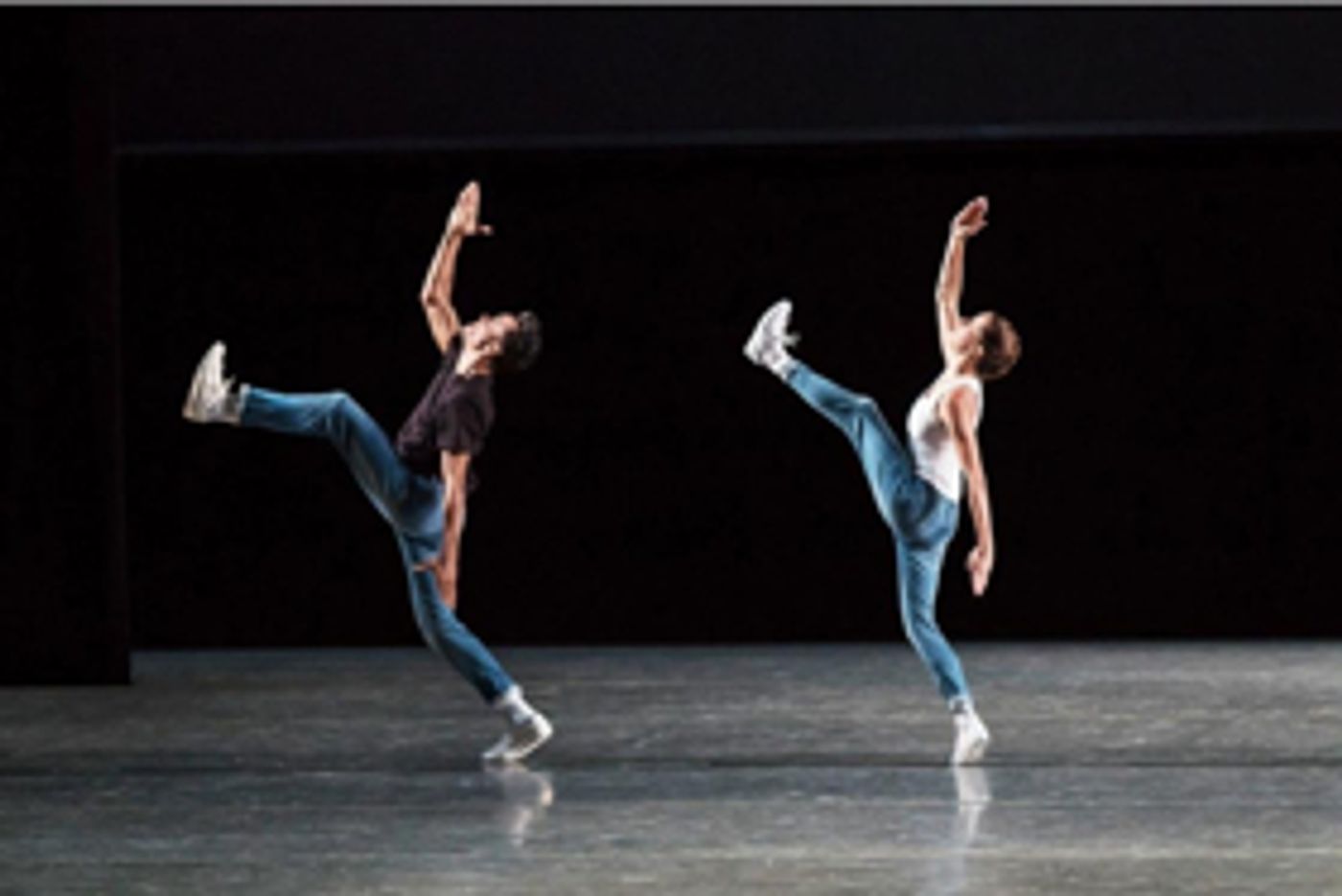Review: NYCB Classic at Lincoln Center

The NYCB's five-part "Classic NYCB" program, performed this past Wednesday, February 6th at Lincoln Center, featured a broad choreographic landscape. Through the work of four choreographers and spanning four decades, the evening featured not only the "Classic NYCB," as promised by the program title, but also a rare brand of "Iconoclastic NYCB." While some audiences might be nostalgic for the glory of 50's Balanchine, this evening proved that perhaps the best is yet to come and that even Balanchine did not shy away from experimentation as he reached towards artistic relevancy.
The evening began with Mauro Bigonzetti 2006 In Vento, music composed by Bruno Moretti. Working with Mark Stanley's dramatic chiaroscuro lighting, a line of dancers seems to appear from thin air. In front of this line, Harrison Ball wavers, leaning back center stage with a spotlight above him. His effect is smartly aligned with the plasticity of Bigonzetti's muscular choreography, with dancers dressed in Bigonzetti's costuming of backless black leotards for women and black pants for the men; while the musical composition places the piece on the razor's edge, teetering on cloying lyricism, a balance the company was able to muster.
The second work, Christopher Wheeldon's After the Rain, has no concerns toppling into overt sentimentality. Set to Arvo Pärt's meditative Spiegel Im Spiegel, this work features a man and a woman, here Sara Mearns and Jared Angl. Mearns has the Sisyphean task of taking on this role after Wendy Whelan, who originated it upon its premiere in 2005. There is a specific contrast between the effervescence of Whelan, and her seeming obliviousness to her partner as she soared in the air, and the much more material collaboration between Mearns and Angle. With Mearns transcendent delicacy is exchanged for a more grounded intimacy.
Balanchine's, who always experimented with the new, incorporated what he saw in the world and pushed his aesthetic to cultural relevancy. His 1974 Variations Pour Une Porte et Un Soupir is the oddest work I have seen at the NYCB, and easily among the coolest. Set to Pierre Henry's sound landscape, it features a "sigh," as performed by the seemingly spring-loaded Daniel Ulbricht, and a "door," as sumptuously performed by Maria Kowroski. The soundscape is admittedly at times a hard to digest cavalcade of grating noises. Though, with so much lilting symmetry and self-assured sensuality, this aesthetic is refreshingly daring. The cunning lighting, originally designed by Ronald Bates and executed here by Mark Stanley, at one point places Maria Kowroski in a tight silhouette. Rouben Ter-Arutunian's costumes include Ulbricht's odd metallic bodysuit and wig, which belongs in its world against Kowroski's theatre sized cape and elegant white tights and shoes.
While this is Balanchine, the 70's dance landscape is very present. In Ulbricht, there is something of Cunningham plasticity and in Kowroski, a Fosse-esque self-certainty that calls to mind both Velma Kelly and Arachne. The only real indication of Balanchine is the sense of individual play and personality that still radiates through the movement; its reflexes for elegance most apparent as the cape is lifted on wires and cascades down onto the dancers.
In high contrast to Variations is Balanchine's Duo Concertant, music by Stravinsky. Performed with an airy affectation of pleased calm by both the dancers, Sterling Hyltin and Anthony Huxley, and on stage pianist Elaine Chelton and violinist Kurt Nikkanen, this work is a much more standard exhibition of Balanchine's ilk for class, elegance, and flexed hands. It is punctuated with movements where the dancers stop next to the piano and, catching their breath, and watch the instrumentalists trudge on with Stravinsky's composition. This pas de deux was a good moment for the dancers to display iconic Balanchine, and served as a guidepost by which we might rank the span of the company's choreographic vocabulary.
The final performance of the evening was Justin Peck's The Times Are Racing, a piece which I previously saw as a flaccid attempt to gain cultural relevancy by incorporating the aesthetics of progressivism. Happily, I'm able to say that there is new energy flowing through either the work or myself and what was previously a repetitive babble of positivity, is now a reverberating enthusiastic celebration of the present moment. Justin Peck was beautifully paired with Ashley Isaacs, who had her hair tightly braided as she performed tap dance footwork next to the choreographer. She, like Peck, is purposefully inexact as she focuses on feeling the movement.
Likewise, Daniel Applebaum and Tiler peck pulsate with energy, even in moments of complete stillness. Even music by Dan Deacon seemed more full of life, faster paced, and organically flowing this time around. If the times are racing, the NYCB seems to be putting in the effort to keep up the pace.
Photo Credit: Paul Kolnik
Reader Reviews
Videos

